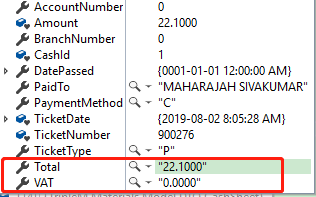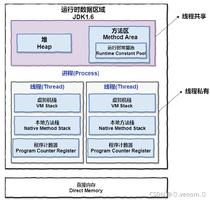测量NUMA(非统一内存访问)。没有明显的不对称性。为什么?
我尝试测量NUMA的非对称内存访问效果,但失败了。
回答:
在2.93GHz,2个CPU,8核的Intel Xeon X5570上执行。
在固定到核心0的线程上,我使用numa_alloc_local在核心0的NUMA节点上分配了大小为10,000,000字节的数组
。然后我遍历数组 50次,并读取和写入数组中的每个字节。测量经过的时间以执行50次迭代。
然后,在服务器中的每个其他内核上,我固定一个新线程,并再次测量经过的时间以对数组 每个字节进行50次读写操作。
数组 很大,可以最大程度地减少缓存影响。我们要在CPU必须一直到RAM进行加载和存储的时候来衡量速度,而不是在缓存有帮助的时候来衡量。
我的服务器中有两个NUMA节点,因此我希望在分配了数组 的同一节点上具有亲和力的内核具有更快的读写速度。我没看到
为什么?
正如我在其他地方看到的那样,也许NUMA仅与具有8-12个以上内核的系统有关?
http://lse.sourceforge.net/numa/faq/
回答:
#include <numa.h>#include <iostream>
#include <boost/thread/thread.hpp>
#include <boost/date_time/posix_time/posix_time.hpp>
#include <pthread.h>
void pin_to_core(size_t core)
{
cpu_set_t cpuset;
CPU_ZERO(&cpuset);
CPU_SET(core, &cpuset);
pthread_setaffinity_np(pthread_self(), sizeof(cpu_set_t), &cpuset);
}
std::ostream& operator<<(std::ostream& os, const bitmask& bm)
{
for(size_t i=0;i<bm.size;++i)
{
os << numa_bitmask_isbitset(&bm, i);
}
return os;
}
void* thread1(void** x, size_t core, size_t N, size_t M)
{
pin_to_core(core);
void* y = numa_alloc_local(N);
boost::posix_time::ptime t1 = boost::posix_time::microsec_clock::universal_time();
char c;
for (size_t i(0);i<M;++i)
for(size_t j(0);j<N;++j)
{
c = ((char*)y)[j];
((char*)y)[j] = c;
}
boost::posix_time::ptime t2 = boost::posix_time::microsec_clock::universal_time();
std::cout << "Elapsed read/write by same thread that allocated on core " << core << ": " << (t2 - t1) << std::endl;
*x = y;
}
void thread2(void* x, size_t core, size_t N, size_t M)
{
pin_to_core(core);
boost::posix_time::ptime t1 = boost::posix_time::microsec_clock::universal_time();
char c;
for (size_t i(0);i<M;++i)
for(size_t j(0);j<N;++j)
{
c = ((char*)x)[j];
((char*)x)[j] = c;
}
boost::posix_time::ptime t2 = boost::posix_time::microsec_clock::universal_time();
std::cout << "Elapsed read/write by thread on core " << core << ": " << (t2 - t1) << std::endl;
}
int main(int argc, const char **argv)
{
int numcpus = numa_num_task_cpus();
std::cout << "numa_available() " << numa_available() << std::endl;
numa_set_localalloc();
bitmask* bm = numa_bitmask_alloc(numcpus);
for (int i=0;i<=numa_max_node();++i)
{
numa_node_to_cpus(i, bm);
std::cout << "numa node " << i << " " << *bm << " " << numa_node_size(i, 0) << std::endl;
}
numa_bitmask_free(bm);
void* x;
size_t N(10000000);
size_t M(50);
boost::thread t1(boost::bind(&thread1, &x, 0, N, M));
t1.join();
for (size_t i(0);i<numcpus;++i)
{
boost::thread t2(boost::bind(&thread2, x, i, N, M));
t2.join();
}
numa_free(x, N);
return 0;
}
回答:
g++ -o numatest -pthread -lboost_thread -lnuma -O0 numatest.cpp./numatest
numa_available() 0 <-- NUMA is available on this system
numa node 0 10101010 12884901888 <-- cores 0,2,4,6 are on NUMA node 0, which is about 12 Gb
numa node 1 01010101 12874584064 <-- cores 1,3,5,7 are on NUMA node 1, which is slightly smaller than node 0
Elapsed read/write by same thread that allocated on core 0: 00:00:01.767428
Elapsed read/write by thread on core 0: 00:00:01.760554
Elapsed read/write by thread on core 1: 00:00:01.719686
Elapsed read/write by thread on core 2: 00:00:01.708830
Elapsed read/write by thread on core 3: 00:00:01.691560
Elapsed read/write by thread on core 4: 00:00:01.686912
Elapsed read/write by thread on core 5: 00:00:01.691917
Elapsed read/write by thread on core 6: 00:00:01.686509
Elapsed read/write by thread on core 7: 00:00:01.689928
不管哪个内核在进行读写,在数组 进行50次迭代读取和写入大约需要1.7秒。
回答:
我的CPU上的缓存大小为8Mb,因此10Mb阵列 可能不足以消除缓存效果。我尝试了100Mb数组
,并且尝试在最里面的循环中使用__sync_synchronize()发出完整的内存隔离。它仍然没有揭示NUMA节点之间的任何不对称性。
回答:
我尝试使用__sync_fetch_and_add()读写数组 。依然没有。
回答:
啊哈!神秘主义者是对的!硬件预取以某种方式优化了我的读/写。
如果这是缓存优化,那么强制使用内存屏障将使优化失败:
c = __sync_fetch_and_add(((char*)x) + j, 1);但这没有任何区别。确实有所作为的是,将我的迭代器索引乘以质数1009来破坏预取优化:
*(((char*)x) + ((j * 1009) % N)) += 1;有了这一更改,NUMA的不对称性就清楚地显示出来了:
numa_available() 0numa node 0 10101010 12884901888
numa node 1 01010101 12874584064
Elapsed read/write by same thread that allocated on core 0: 00:00:00.961725
Elapsed read/write by thread on core 0: 00:00:00.942300
Elapsed read/write by thread on core 1: 00:00:01.216286
Elapsed read/write by thread on core 2: 00:00:00.909353
Elapsed read/write by thread on core 3: 00:00:01.218935
Elapsed read/write by thread on core 4: 00:00:00.898107
Elapsed read/write by thread on core 5: 00:00:01.211413
Elapsed read/write by thread on core 6: 00:00:00.898021
Elapsed read/write by thread on core 7: 00:00:01.207114
至少我认为这是正在发生的事情。
感谢Mysticial!
对于只看一下这篇文章以大致了解NUMA性能特征的任何人,根据我的测试,这是底线:
对非本地NUMA节点的内存访问的延迟约为对本地节点的内存访问的延迟的1.33倍。
以上是 测量NUMA(非统一内存访问)。没有明显的不对称性。为什么? 的全部内容, 来源链接: utcz.com/qa/419976.html









